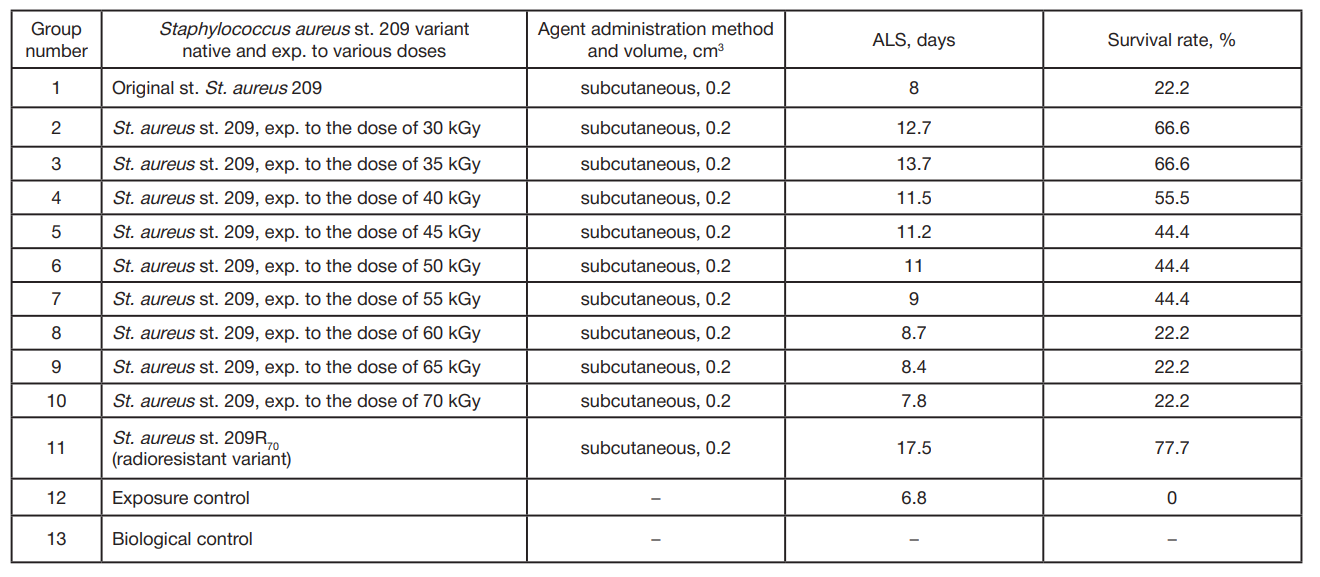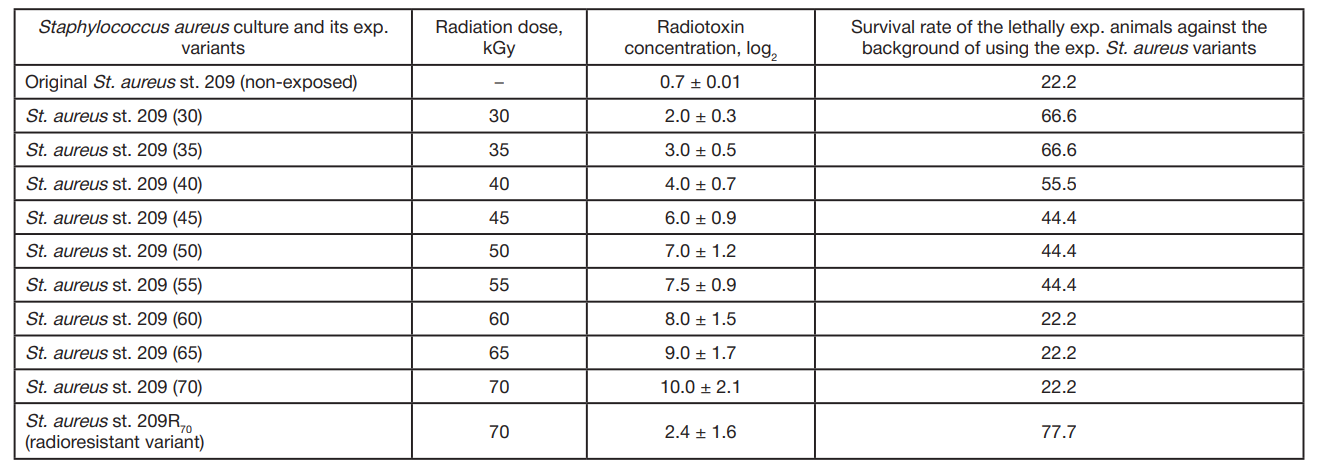
This article is an open access article distributed under the terms and conditions of the Creative Commons Attribution license (CC BY).
ORIGINAL RESEARCH
Evaluation of anti-radiation efficacy of the Staphylococcus aureus-derived therapeutic agent
1 Federal Center for Toxicological, Radiation, and Biological Safety, Kazan, Russia
2 Kazan Federal University, Kazan, Russia
3 Russian Medical Academy of Continuing Professional Education of the Ministry of Health of the Russian Federation, Moscow, Russia
4 Kazan State Medical University of the Ministry of Health of the Russian Federation, Kazan, Russia
5 Republican Clinical Hospital of the Ministry of Health of the Republic of Tatarstan, Kazan, Russia
6 Academy of Sciences of the Republic of Tatarstan, Kazan, Russia
Correspondence should be addressed: Timur R. Gaynutdinov
Nauchnyj Gorodok, 2, Kazan, 420075, Russia; ur.liam@rumit_rtg
Funding: the study was conducted the expense of the subsidy granted to the Federal Center for Toxicological, Radiation, and Biological Safety for research work, state registration No. 01200202604.
Acknowledgements: the study was performed within the framework of the Strategic Academic Leadership Program of the Kazan Federal University (PRIORITY-2030).
Author contribution: Gaynutdinov TR — literature review on the issue, conducting the experimental part of the study, processing of the data acquired, text editing, manuscript preparation; Ryzhkin SA — academic advising; Shavaliev RF — advisory assistance during the experimental part of the study, text editing; Vagin KN, Kurbangaleev YaM, Ohrimenko SE — advisory assistance during the study; Kalimullin FH — assistance and conducting the experimental part of the study; Plotnikova EM, Idrisov AM, Mayorova EN — conducting the experiments, statistical data processing.
Compliance with ethical standards: all the procedures involving model animals were conducted in accordance with the Good Laboratory Practice and the Directive 2010/63/EU of the European Parliament and of the Council (2010) on the protection of animals used for scientific purposes.




